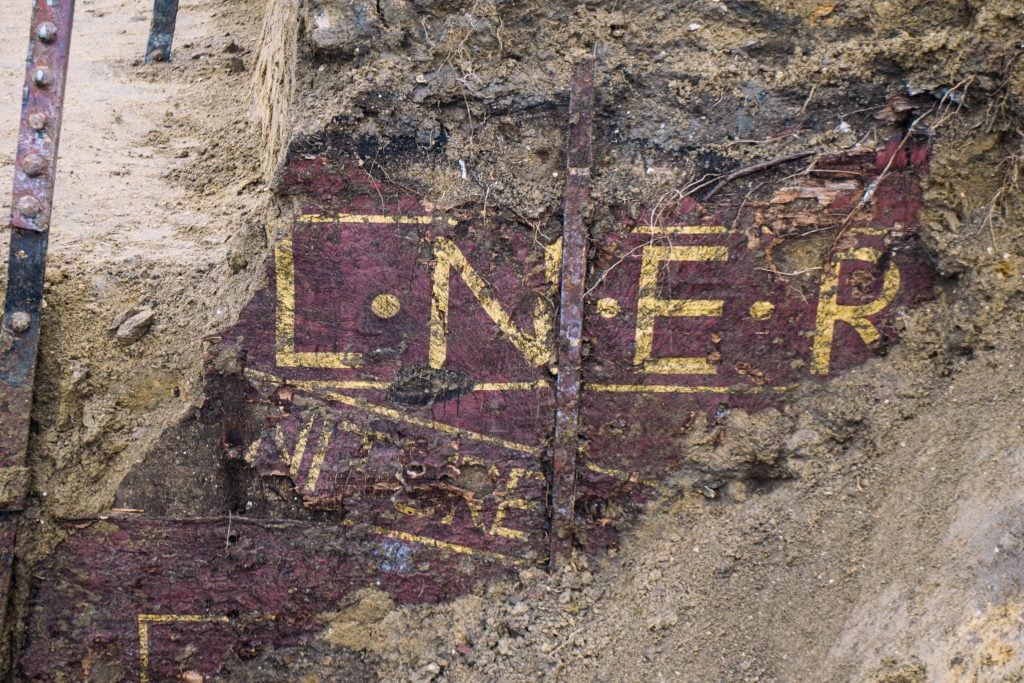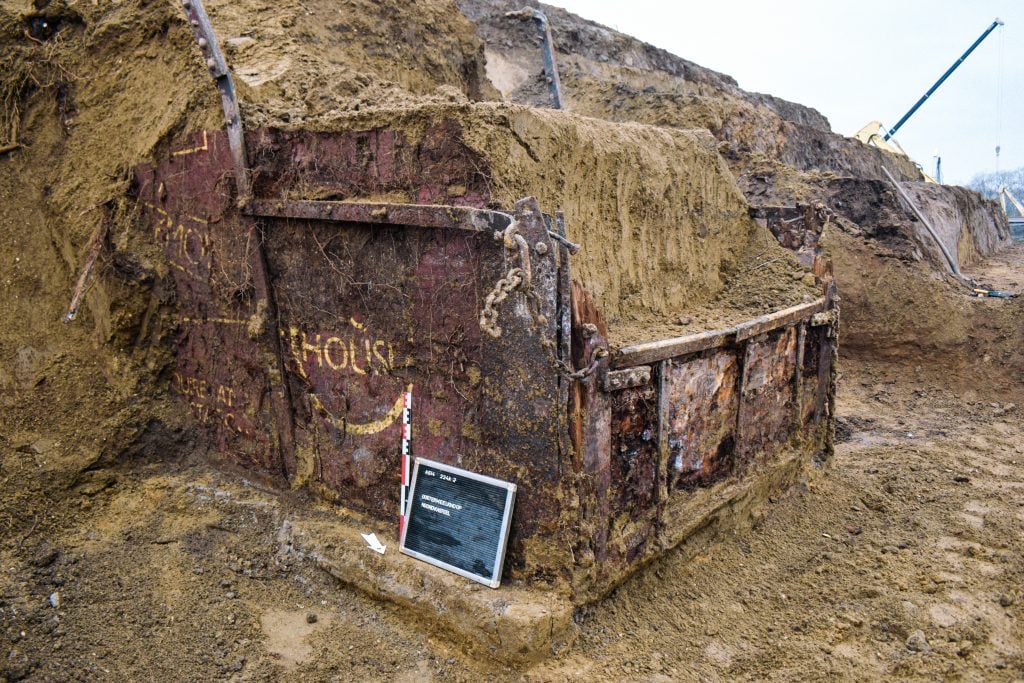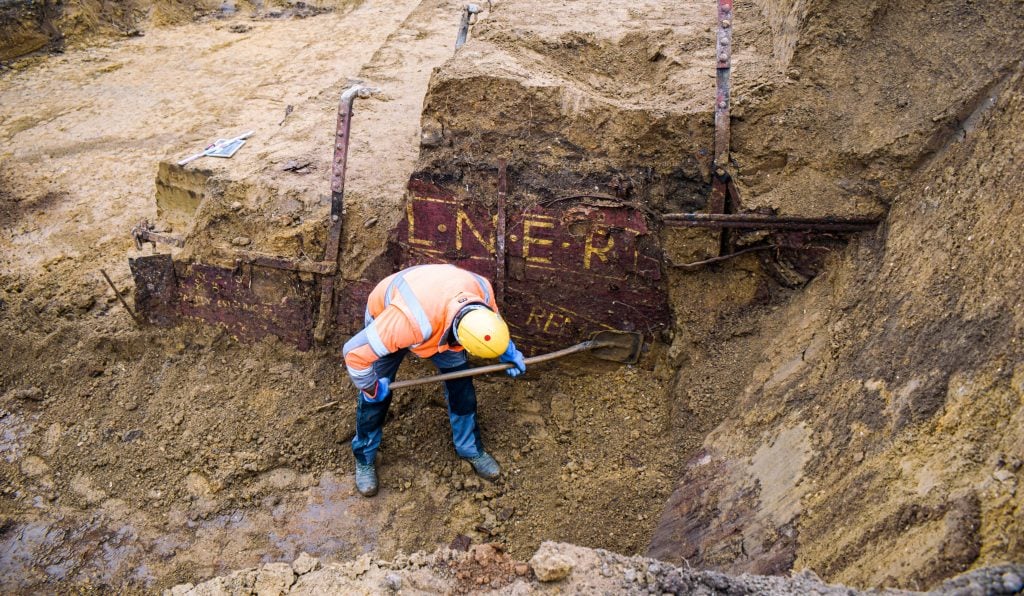Archaeology & History
A Century-Old U.K. Train Car Mysteriously Turns Up Under a Belgian Citadel
The wagon has appeared miles away from its headquarters.

Researchers from the Urban Archeology Department of the City of Antwerp were excavating an area underneath the wall of a 19th-century fortress known as the Old Citadel as part of their “Oosterweel Link” project, when they stumbled upon the remains of a 100-year-old storage wagon from Great Britain.
The wooden wagon was in a poor state. Deteriorating rapidly after excavation, its only identifiable features were a set of inscriptions reading “FURNITURE REMOVAL TO HOUSE,” “Enquire at any station,” “BK769,” and “LNER.”
LNER stands for London North Eastern Railway, a British train operating company headquartered more than 500 miles away in the city of York. The company was founded in 1923 as part of the 1921 Railways Act. Also known as the Grouping Act, the piece of legislation consolidated the country’s 120 independent railway companies and their combined 20,000 miles of track into four larger, hopefully more profitable corporations known as the “Big Four.”
LNER was one of them, holding this title until 1948, when all of its members were nationalized to form British Railways. It is still operational today, owned by OLR Holdings for the Department of Transport.

A 100-year-old British train car excavated in Belgium. Photo: Stad Antwerpen
As indicated by the BK769 label, the wagon discovered in Antwerp was a removals truck. “B” denotes the trucks size, and “K” its purpose: moving furniture. During the 1930s, the decade the wagon is thought to have been in use, LNER specialized in servicing people who were moving houses. Removal wagons served the same purpose as moving trucks do today.
The first LNER removal wagons were painted a reddish-brown, while later models sported a navy blue color. Because the wagon underneath the Old Citadel has traces of dark red paint, it seems to have been part of the first iteration of removals, making the find all the more special.

Excavation of the train car. Photo: Stad Antwerpen
“It’s a mystery as to how the carriage came to be in Antwerp,” Femke Martens, a consultant archeologist working with the Urban Archeology Department, said in a press release from LNER. Talking to the Brussels Times, city officials speculated that the area underneath the Old Citadel may have been used as a storage space.
Its mysterious origins do not make the discovery of the removals wagon any less exciting. “This curious find has certainly generated lots of interest and we are delighted the team from the Urban Archaeology department of the City of Antwerp have helped shed more light on the discovery,” said LNER Communications Director Stuart Thomas. “We’re fascinated by LNER’s history, and we’d like to thank the team for their help in unearthing more information about LNER’s proud past.”
The discovery comes shortly after LNER’s 100th anniversary in 2023. Asked what will happen to the removals wagon, company representatives told the BBC that it is unlikely the vehicle will return to England because of its “very fragile state.”





